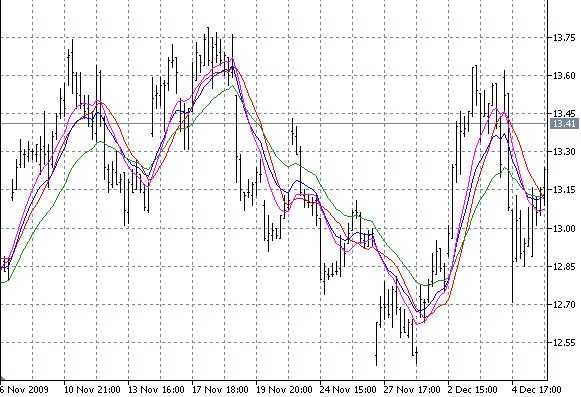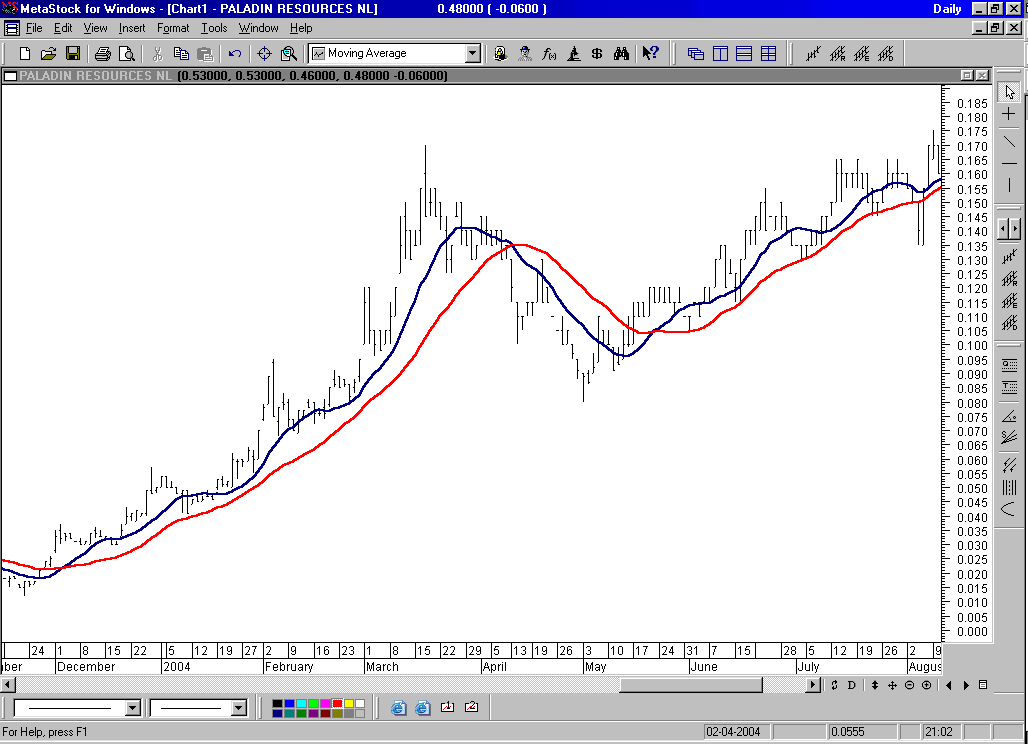Exponential Moving Averages_2
Post on: 17 Апрель, 2015 No Comment

Exponential Moving Averages (EMA)
One of the first indicators that most traders will learn when finding the fascinating field of Technical Analysis is the Moving Average. Moving Averages can have multiple purposes, and can be used in a variety of ways; often-times depending on the traders goals.
Price, of any asset, will rarely exhibit a directly linear pattern. In most cases, price will oscillate in both directions even in strong uptrends or strong downtrends. The moving average can often help the trader smooth, these candle-to-candle fluctuations to arrive at an average, value.
Lets look at an example to illustrate:
In the GBP/USD Daily chart above, you are seeing the 200 period Simple Moving Average applied. This is one of the more common moving averages thats used by Technical Analysts. Notice that the trend is to the up-side for most of the observed period. The Moving Average assists the trader by taking the short-to-intermediate term oscillations, and averaging those with the bullish price movements to plot this as a smoothed price.
The calculation of the above Simple Moving Average is fairly easy. The value for the Moving Average of the current candle above can be calculated by taking the most recent 200 closing prices, adding them together, and then dividing by 200.
As new prices trend higher, these higher values will then assist in increasing the value of the MA (albeit marginally, as the new higher price is only 1/200 th of the moving average).
Now you may notice, by the very nature of the indicators, Moving Averages will lag, price. If price doubles this bar, once again, it will only have a marginal impact on the Moving Average because the new price (at double the previous price) is only 1/200 th of the calculation.
This is where the Exponential Moving Average (also known as EMA) can help. Its important to note, the issue of lag can never be completely removed from Moving Averages, as the indicator is always going to lag the market by the nature of its composition. But traders can attempt to mitigate this downside, and one of the ways of doing so is the EMA.
With the Exponential Moving Average, a heavier weighting, is used on more recent values grading the recent changes in price more heavily than later changes in price.
In the example above in which price doubled today, the EMA should reflect more of this movement than the Simple Moving Average, as additional weight, is being assigned to the current bar.
Below is the same chart we had looked at above, but this time it has a 200 period EMA, as well as the 200 period Simple Moving Average.
The Exponential Moving Average is plotted in Green in the above chart, and Ive also identified 2 instances denoted by the numbers 1 and 2.
In the first instance, notice that price is making a very quick ascension. The slope of the Simple Moving Average (in Orange) begins to move up, registering these new values. But also notice how much more quickly the Green line moves up (the Exponential Moving Average also set to 200 periods).

And later in the chart, for instance 2, price reverses to the downside. Once again, the Green EMA registers these more recent price fluctuations more quickly than the Simple Moving Average in Orange; and we can tell us the Green line begins moving down sooner, and at a faster rate.
This is something that we can see time and time again, as the mathematical formula behind the two Averages will allow for EMAs to show recent price movements more prevalently.
Despite their differences, there are also many similarities between the various types of moving averages. The choice as to which to use is often going to be governed by each individual traders personal preference or taste, and maybe even more importantly their goals.
— Written by James B. Stanley
To contact James Stanley, please email Instructor@DailyFX.Com. You can follow James on Twitter @JStanleyFX.
To join James Stanleys distribution list, please click here.
DailyFX provides forex news and technical analysis on the trends that influence the global currency markets.
Learn forex trading with a free practice account and trading charts from FXCM.














